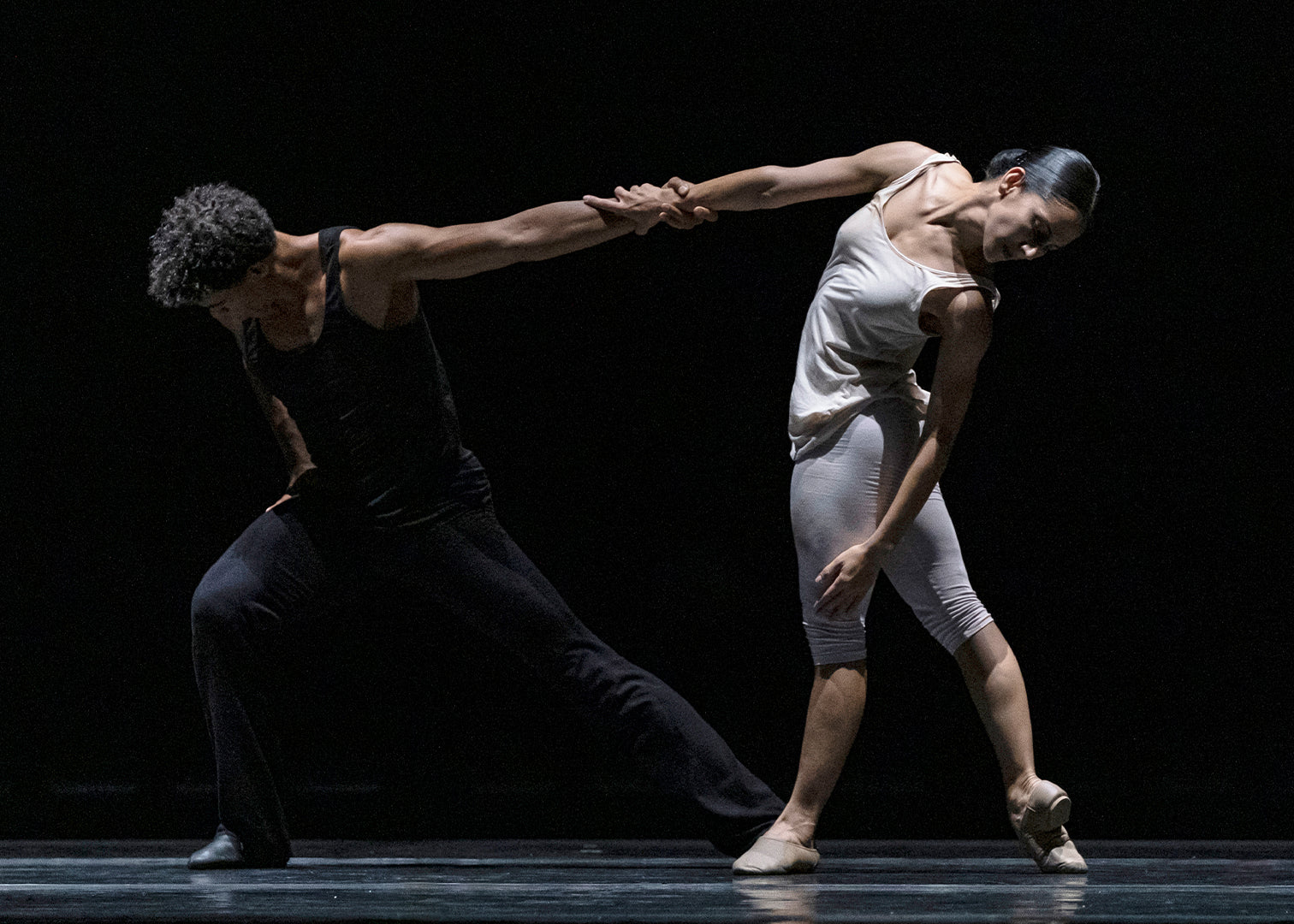The double bill begins with “Rabbit” from Swedish choreographer Pontus Lidberg, a tender offering with a splash of surrealism. Dancers in rabbit masks encircle an unmasked man, their otherness both alluring and disquieting as they engage him in a series of gentle duets and livelier group phrases. A piano-heavy score—Henryk Górecki’s mournful Kleines Requiem für eine Polka, played live—encourages a transient, sweetly sad mood, as do the wistful schoolboy-inspired costuming and the work’s lone prop, a wooden swing, hinting as they do at a left-behind past and an uncertain future. The sense of melancholy is wonderfully distinct, and soothing in its saturation.
Lidberg’s choreography starts out sweeping and lyrical, cascading along smoothly with the help of organic, fluidly unfurled shapes. Later it gives way to dramatic pauses and agitated jumps, the rabbits looking more Donnie Darko than Beatrix Potter as they rock frantically from one foot to another. The dancers’ timing during these faster segments became a little spotty, but they filled the space easily and powerfully, and demonstrated a great tolerance for challenging feats like falling from tilts and leaping onto their knees. Lidberg has taken care to maximise the benefits of an all-male cast, and it pays off, particularly in the jumps department: one memorable scene sees the cast cavort in a fantastic flurry of soaring hops, dives and leapfrogs.
The billing for “Life” promised “a show of two halves,” so it was little surprise to find a sharper, more biting offering after the interval. Javier de Frutos’s “Fiction” imagines the choreographer’s death and the obituary he would inspire—a self-aggrandising and self-deprecating exercise at once. A voiceover recites this fictional obituary, occasionally pausing and rewinding to highlight his more luminous achievements (like the Olivier Award he secured for his West End revival of “Cabaret”) and rephrase his more provocative legacies (like his 2009 Diaghilev tribute “Eternal Damnation to Sancho and Sanchez,” which prompted walkouts, a broadcasting ban and even several death threats). It also broadcasts some of de Frutos’s ideological viewpoints (“Bureaucracy strangles creativity”) and apparent insecurities (“To nobody’s surprise he was unmarried”). Meanwhile, the dancers perform a series of sequences tied to the words, retracing their steps in sync with the reiterations.
With its camp execution and navel-gazing air, the conceit calls to mind Hofesh Shechter’s confessional voiceover in “the barbarians in love.” “Fiction” is wittier in tone, though, and its staging less complicated, arranged as it is around a ballet barre (the postmodern set-up sees the dancers ‘informed’ of their choreographer’s death during a rehearsal for his latest work). I found the choreography excessively beholden to this prop at times—my own ballet teacher’s jokey refrain “Let’s get away the goddamn barre!” sprung to mind more than once during the performance—but there’s no denying de Frutos has found superbly creative ways to use it: the dancers slip deftly and daringly underneath the barre, swing over the top of it in complex, gymnastic ripples, hustle to form diligent lines that would impress the strictest of ballet mistresses. The variety of emotions that emerge throughout the piece are equally rich: we see grief, confusion and even clowning, the latter aided by snippets of Donna Summer’s “Let’s Dance” blasted at full volume.
It’s this spirited mix of emotions, visible here and in “Rabbit,” that bring this bill to life—a bright way to deal with the dark subject of death.









comments